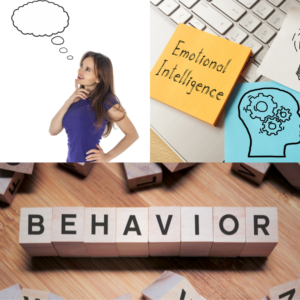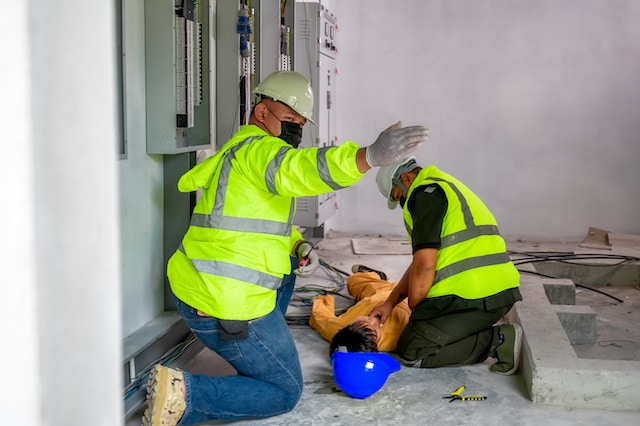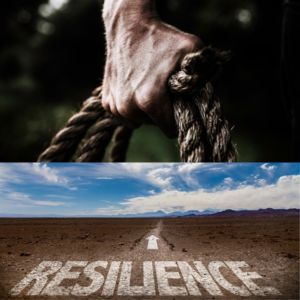

Critical Incidents in the Workplace. Why Peer Support Works

Dr John Crimmins
Cognitive Behavioural Psychotherapist.
Managing stress after a critical incident in the workplace is a vital service that employers need to provide to their staff. Peer support is a powerful support that can be implemented with great effect.
Psychosocial risk factors have become more prevalent in today’s workplace, posing a threat to job performance. A positive work environment, psychosocial support, the ability to cope with stress, and skills and knowledge are all linked to more successful coping after a critical incident.
According to a report by the Institution of Employment Studies, 9 out of 10 people will experience trauma at some point in their lives. One-third of these will develop PTSD or Post Traumatic Stress Disorder. A traumatic event is unavoidable and can occur to anyone, including employees. However, preparing for it with a peer support service and taking appropriate action when it occurs can help reduce the trauma’s effects.
What exactly is trauma, and how does it affect employees?
Trauma is defined as a specific event or series of events that elicit an intense emotional response in a person. This deliberate emotional response can manifest as helplessness, fear, horror, uncontrollable crying, or even fainting.
There are a number of symptoms that indicate trauma.
Cognitive:
● Intrusive thoughts of the event that may occur out of the blue
● Nightmares
● Visual images of the event
● Loss of memory and concentration abilities
● Disorientation
● Confusion
● Mood swings
Behavioral:
● Avoidance of activities or places that trigger memories of the event
● Social isolation and withdrawal
● Lack of interest in previously enjoyable activities
Physical:
● Easily startled
● Tremendous fatigue and exhaustion
● Tachycardia
● Edginess
● Insomnia
● Chronic muscle patterns
● Sexual dysfunction
● Changes in sleeping and eating patterns
● Vague complaints of aches and pains throughout the body
● Extreme alertness; always on the lookout for warnings of potential danger
Psychological
● Overwhelming fear
● Obsessive and compulsive behaviors
● Detachment from other people and emotions
● Emotional numbing
● Depression
● Guilt – especially if one lived while others perished
● Shame
● Emotional shock
● Disbelief
● Irritability
● Anger
● Anxiety
● Panic attacks
Trauma can have a negative impact not only on an employee’s work performance but also on their personal life.
It limits an employee’s ability to be creative and productive, prevents them from learning and applying themselves at work, and prevents them from making interpersonal connections.
Best practice for dealing with workplace trauma.
Trauma can be triggered by a variety of events, including a close person’s death, suicide, or accident, bullying, harassment, a toxic work environment, acute pressure, overworking, isolation, extreme noise, flashing lights, lock-down, and more.
Every person reacts differently to trauma. The first thing that helps pacify a traumatized person or prevents trauma from occurring in the first place is a sense of safety. Trauma is a psychological disorder. When trauma triggers are present in the workplace, it is critical for leadership and human resources to collaborate in order to provide psychology-based support to their employees.
Peer Support.
Peer support programs can prevent organizational psychological health-related behaviours such as disengagement, absenteeism, and intentions to leave the organization (Whybrow, Jones, & Greenberg, 2015).
Coworkers can be trusted sources of advice, and the best care and support can often be found within the workplace. Peer support is a workplace well-being strategy that uses motivated employees’ nonclinical qualities and abilities to help coworkers in times of struggle or personal crisis.
Peer support is not counselling or therapy; It is a type of psychological first aid.
It is a service for companies to provide familiar employee support systems in high-stress situations. Many employees would rather discuss their worries with a person who understands their circumstances than with an off-site therapist who is not present at work. An organization must first train employees on how to work with peers who have been through a traumatic incident before launching a peer support program.
Training a small group of employees to recognize signs of post-traumatic stress disorder symptoms and how to support peers enables them to serve as an empathetic outlet for their coworkers. Coworkers have a unique perspective on the day-to-day realities of social work. Organizations can invest in their human capital by providing employee peer support training. A member of the peer support team must exhibit a number of characteristics that reflect the program’s underlying principles. To begin, it is critical to respect and communicate the confidential nature of the assistance being provided, as well as to respect and communicate personal boundaries for those seeking help. Peer support requires compassion, composure, and trained employees who genuinely care about others and can remain calm under pressure. Active listening skills, rapport building, and fostering trust are qualities that will put those in need at ease.
Putting Peer Principles into Practice
Trauma Is an emotional shock that overwhelms our ability to cope, causing us to go into fight/flight or freeze mode.
● It is a normal reaction to an abnormal situation
● It can affect the chemistry of our brain
● Experiencing a traumatic event can result in mental health distress, which is
labelled as PTSD.
“Individual trauma results from an event, series of events, or set of circumstances that are experienced by an individual as physically or emotionally harmful or life-threatening and that has lasting adverse effects on the individual’s functioning and mental, physical, social, emotional, or spiritual well-being.” (SAMHSA).
Why Understanding Trauma is Important
Trauma can be all-pervasive.
● Trauma has a broad and diverse impact.
● Trauma has a deep and life-shaping impact.
● Trauma, particularly interpersonal violence and transgenerational
transmission are self-perpetuating.
● Trauma is insidious; it affects the most vulnerable differently.
● Trauma affects how people approach services.
A variety of experiences may qualify as traumatic. Examples include
● Physical abuse
● Psychological abuse
● Sexual assault
● Witnessing a death of a colleague.
● Intimate partner violence
● Adverse childhood experiences
● Neglect
● Loss
● War and conflict
● Poverty
● Racism
● Community violence
● Discrimination
● Medical trauma
● Natural Disasters.
Dr John crimmins Peer support training service for business
Dr Crimmins provides a full 5 day training programme for business.
This course is designed to teach participants the fundamentals of, CISD and a specific protocol for, one-on- one trauma peer support. The course is designed for staff who have no experience in dealing with trauma.
Contact Dr John at his phone: 00353833106912

Dr John Crimmins with members of staff of DP World at the end of a 5-day training event for Peer support in Critical incidents in the Workplace
Trauma-informed peer practises.
It is based on mutual exchange and shared experience.
Removes the power disparity that exists in traditional mental health settings and clinical relationships.
Allows for the reciprocal giving and receiving of assistance:
Encourages relationships that lead to new ways of understanding one’s own experience. Not as medical diagnostics, but as understandable trauma reactions.
Qualities Essential to Working with people who have experienced Trauma
● Empathy
● Compassion
● Ability to talk openly and honestly
● Self-Awareness
● Flexibility
● Comfort with the unknown
● Willingness to learn
● Willingness to emotionally connect
● Ability to treat people as equals.
● Mutuality and Collaboration.
● Self Care.
Trauma-Informed Peer Practices:
● Builds on shared experience and mutual exchange
● Eliminates the power differential inherent in traditional mental health settings/clinical
relationships
● Provides for reciprocal receiving and giving of support:
● Fosters relationships that establish new ways of understanding their experiences –
not as clinical pathology rather as understandable reactions to trauma. 13 Things Peers do that cause Disconnect…
● Ordering,
● Directing
● Cautioning
● Arguing or lecturing
● Telling people what they should do
● Demoralizing
● Being unaware of your own power
● Agreeing, praising Over relating
● Interpreting or analyzing
● Sympathizing
● Questioning or probing
● Withdrawing, joking or changing the subject
● Steering the conversation or pushing your own agenda
Peer Support is Unique
Due to Stigma you might be the first person they are reaching out to help understand their experiences: Mutuality
Offer an alternative to the medical model •
No assessments or evaluation •Self Help Peer Support Values person-centred
Evidence shows that working as a peer will not only foster personal recovery but also may enhance humanistic growth of the individual stemming from mutual support.
Critical Incident Stress Management.
Guidance, Policies and Procedures
A guide for Managers.
The CISM (Critical Incident Stress Management) model of post-incident care is provided by the Learning and Development People Department.
CISM is the recommended model of care for many industries, including the military, policing, and emergency medical services, because it represents a model of care that is in line with best worldwide practice. When incidents occur, CISM delivers a structured response that gives employees the best chance of recovery.
The cornerstone of the CISM model is the Peer Supporter.
Peer supporters are employees who have volunteered their time to offer appropriate support to coworkers who have been involved in or witnessed a potentially traumatic event.
This team is led by a Team Leader. They will be performing the peer supporter role in addition to the duties they perform as part of their normal work.
Peer supporters are good team players, adaptable and possess good communication and interpersonal skills at all levels within the organisation.
A comprehensive training program has been provided to peer supporters. The training is designed to equip them with the necessary abilities and skills to perform the role effectively.
Peer supporters will also receive continuing assistance from the Learning and Development People Department.
This is an opportunity for peers to get involved in supporting colleagues during difficult and hard times, and we hope they will find it rewarding.
Peers can be deployed to operational environments to provide on-scene support and psychological first aid. Psychological first aid is an approach to helping people affected by an emergency, disaster or traumatic event. In the aftermath of a critical incident.
We ask that all employees, particularly line managers, are aware of the procedure for receiving a CISM response from the Learning and Development department.
The World Health Organisation (2006), defines a critical incident as ‘an event out of the range of normal experience; one which is sudden and unexpected, makes you lose control, involves the perception of a threat to life and can include elements of physical or emotional loss.’
Policy for Preventing and Managing Critical Incident Stress (CISM)
A company should strive to provide a continuum of care to all of its employees, including support for employees who may be exposed to potentially catastrophic occurrences in the course of their employment. The Prevention and Management of Stress in the Workplace outlines responsibilities for encouraging employee welfare, identifying potentially traumatic stressors, assessing risk, and intervening as needed (2017)
Policy Framework.
The critical incident stress policy specifies how we will respond to employees who have been exposed to potentially traumatic circumstances outside of their typical work experience. We need to respond in a way that is qualitatively different from how we normally respond in the workplace. Because people react to comparable situations in various ways and have diverse reactions to important incidents, what is traumatic for one person may not be for another.
It is impossible to give generic advice that applies to all situations and employees.
Because a workforce is not homogeneous, distinct groups of employees will have varying work experiences and circumstances, as well as varying demands. Employees from all areas of the company should be involved in identifying potential stressors and effective solutions to reduce or manage them.
Definitions:
A critical incident, according to the World Health Organisation (2006), is ‘an event out of the range of normal experience; one which is sudden and unexpected, makes you lose control, involves the perception of a threat to life and can include elements of physical or emotional loss.’
Frequently, such occurrences are unpleasant enough to overwhelm, or threaten to overwhelm, a person’s coping abilities. Multiple deaths, gruesome injuries, exposure to human remains, injuries to, or death of children, or people we know, have all been shown to be highly distressing, according to research (The Ambulance Service CISM Committee 2008).
The majority of individuals might be seriously shaken by a critical incident, but they can recover relatively quickly. However, for some people, the full impact of a critical incident does not become apparent until serious symptoms appear after several weeks.
Disturbing flashbacks, sleep problems, nightmares, memory loss, depression, numbness, and other stress-related symptoms are some of the possible side effects. This is known as post-traumatic stress disorder (PTSD). Acute stress is defined as stress that happens within one month of a crucial incident. Repeated exposure to crucial occurrences can help some people cope more effectively, but it can also make a person more susceptible to later incidents, triggering a cumulative traumatic reaction.
Although only a small percentage of persons who are involved in critical incidents develop serious symptoms, the severity of the impact on these individuals necessitates special attention. With its Peer Supports program, DP World attempts to give care and, if feasible, to avoid events, mitigate their impact, and help individuals who have been affected.
The Role of the Manager.
The role of the Manager through their organisational position and understanding of the service area, is crucial. The Manager must prepare for and support staff through and after any critical incidents that they may encounter in the course of their work. In carrying out these responsibilities, he/she may avail of the support of the Peer Support Team Leader.
Managing critical incident responses:
It is crucial to consider how we help employees following a critical incident. Early and proper management can help decrease the consequences of stress and reduce the risk of developing more problems later. At this stage, interventions should be modest, pragmatic, local, and informal. Our primary goal should be to provide care while reducing stress.
The following are the main aspects required to meet legal requirements to give a duty of care to employees. This framework is based on an exhaustive analysis of models of best practice and has been developed from Devilly and Cotton (2003) suggested standards for organisational practices, as well as the National Institute for Health and Clinical Excellence guidelines in the United Kingdom.
In the event of a critical incident, or potentially traumatic event, managers should ensure that the following actions are taken:
Ensure that all affected employees have instant access to one of the peer support teams either within 24 – 72 hours following the event.
The practical support they need will vary depending on the circumstances, but may include:
- Assistance with practical arrangements such as transportation home or contacting a family member;
- Providing refreshments – tea, coffee (no alcohol);
- Providing cover to allow for ‘down time.’ This does not always imply leaving duty; it may be preferable to keep individuals who have been impacted together in the immediate aftermath of an occurrence so that they can gather their thoughts, talk about what happened, and offer support to one another.
Social support entails showing compassion for persons who are affected on a daily basis and listening to their concerns. It is not clinical in nature and should include: •
- Contact with the person’s immediate manager to acknowledge what has happened, express concern, provide social and practical support, and recognize the efforts of staff;
- Connect with a peer support person.
Make employees aware of the Peer support services and provide them with the opportunity to use them if they so desire.
True support for employees is demonstrated by early access to emotional help and follow-up with our peer support services after an event. It is not meant to be a therapeutic intervention at this point, but it does give the employee access to the peer supporter to assess for stress symptoms.
Provide factual information and normalise people’s reactions, not symptoms:
People who have been involved in a critical incident in any way have a strong desire for information following the event; what happened? Who was involved in this? Who is harmed (killed, injured)? Is there any paperwork that needs to be completed?
Who needs to be kept up to date? Is there going to be an investigation?
What will they be expected to do?
After an incident, the presence of the peer supporter who can convey accurate facts about what happened and detailed plans to handle the problem can alleviate anxiety, dispel rumours, and restore order.
Failure to provide this clarity and advice can add to the already high levels of stress experienced by the employees involved.
The Peer support Team Leaders presence is preferred at this point also.
As the matter develops, regular meetings with all parties involved should be held, especially if there is an inquiry requiring the completion of reports or interviews with authorities.
As part of ‘normalising reactions,’ information should be provided on normal responses to important incidents to those affected by the event so that they may better understand their own reactions. This information can be provided by the peer supporter both verbally and in a written handout. Employees should not be forced to attend a peer support meeting if they do not want to. Attendance should be entirely voluntary.
Distribute information booklets to all those who may be affected by a catastrophic occurrence in the workplace, as well as the support resources available.
Promote proactive problem solving:
According to research, encouraging people to take an active role in events makes them feel more in control. The importance of allowing employees to come up with their own answers to problems and ways of dealing with difficult work conditions was highlighted in the WorkPositive research. When coping with the aftermath of a significant incident, this is very important.
In general, you should encourage employees to use the coping mechanisms that they find most helpful in their particular workplace.
Give general suggestions about taking care of themselves, such as minimising alcohol use, using social supports, and other basic parts of self-care, rather than imposing specific solutions.
Monitor staff to identify people who may be at-risk:
The team leader should follow up with workers affected by a critical incident or other potentially traumatic situation, in addition to fulfilling urgent assistance needs. This could be within 24 hours for people who are really distressed. Others might benefit from a follow-up within 4 to 14 days, depending on the circumstances. The manner in which you follow up and when you do so should always be suitable to the specific scenario and the level of discomfort displayed by the employee.
This follow-up will allow time for post-traumatic stress symptoms such as depression, avoidance behaviour, or high anxiety. After a critical incident, guidance should be sought and help from the Peer Support team Leader if there are concerns about any member of staff.
It is critical that you remain watchful and supportive, especially after the occurrence, before going off duty, throughout any absences from work, prior to and after returning to work, and during any investigation or legal procedures, such as an inquest.
Give persons who report ongoing distress quick access to early intervention:
Only a tiny percentage of employees will require specialised assistance, but for those who do, it is critical that they receive it fast. You should be informed of the procedures for referring people to various support services so that, if necessary, quick and convenient access can be arranged.
Ensure proper inter-organizational communication and feedback:
The support services for affected employees should serve as a conduit between the affected employees and management.
They must distinguish between complaints about the incident and other pre-existing, unrelated workplace difficulties.
If a critical incident occurs in your area of responsibility, you should assess key aspects of how it was handled with all stakeholders to see what modifications to the existing policy or work practice are needed. In some cases, an external facilitator may be valuable in conducting such a review and providing feedback to the Learning and Development People Department from these sessions to aid in the development of the program and revision of policy.
Policy review
This policy should be reviewed on a regular basis to ensure that it remains current with research advances. Any recommendations from a process review of a big event, as well as relevant new research, must be included in policy reviews.
Summary:
Policy for Managing Critical Incidents In the event of a critical incident, or potentially traumatic event, managers should:
- Evaluate if employees affected have access to immediate practical and social support.
- Make all employees aware of availability of the Peer support service and facilitate access to the service.
- Provide factual information about the incident and its aftermath and possible stress responses to it.
- Provide general advice about self-care and encourage employees to identify ways of coping that suit them.
- Monitor staff to identify people who are particularly distressed and who may be ‘at risk’.
- Arrange speedy access to our specialist peer support service for ‘at risk’ employees.
While managers have the primary responsibility for dealing with stress, they may seek guidance and support from the HR or Learning and Development People Department.
Sign up for our Excellent Diploma course in CBT.


